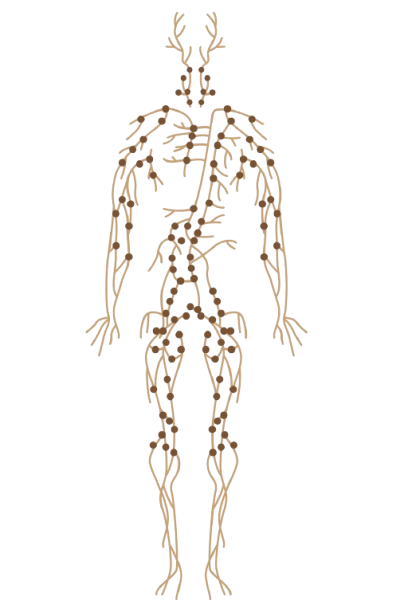Breathwork: A simple yet powerful tool for workplace well-being
If you’re serious about creating a healthier, more effective, and balanced workplace, it starts with teaching employees how to regulate their own nervous system.
Well-being initiatives work best when they’re practical, engaging, and consistently implemented. Conscious Connected Breathwork (CCB) is not a quick fix—it’s a dedicated 60-minute practice that provides employees with a deep reset, mental clarity, and emotional resilience.
Companies that integrate CCB breathwork into their wellness programs aren’t just offering relaxation—they’re investing in long-term performance, focus, and well-being.
To bring this into real-world context, I spoke with Mugdha Prabhu, a founder and CEO of iThrive, who’s been integrating CCB into her team’s rhythm.
“CCB sessions create clarity, alignment, and a deeper understanding of one’s own purpose,” she shared. “I want my team to be relaxed and happy and show up for work because they like what they do.”
The Science Behind Breathwork & Stress Reduction
To understand why breathwork is so effective, we need to briefly look at the autonomic nervous system (ANS), which regulates breathing, heart rate, digestion, and stress responses.
It consists of two key branches:
✔ The Sympathetic Nervous System (SNS) – Known as fight-or-flight mode, it can be activated by stress, deadlines, or high-pressure situations. It increases heart rate, blood pressure, and cortisol levels to prepare the body for action. This response is useful—if we know how to transition out of it efficiently. With CCB practice, people learn how to shift seamlessly from stress activation back into a regulated state, preventing burnout and mental fatigue.
✔ The Parasympathetic Nervous System (PNS) – Known as rest-and-digest mode, it slows the heart rate, reduces stress hormones, and promotes recovery. Being in this state improves focus, emotional balance, and overall well-being—helping employees work with clarity and resilience instead of reactivity and exhaustion.
An essential part of this balance is the vagus nerve, which acts as a bridge between these two systems, influencing almost all major bodily functions.
Deep breathing and vagal toning, both key elements of CCB breathwork, directly stimulate the vagus nerve, helping the body transition from stress to calm, from overdrive to clarity, from tension to ease.
Why Breathwork is a Game-Changer for Corporate Wellness
A well-regulated nervous system is the foundation of mental clarity, emotional balance, and sustainable energy levels. Here’s how regular CCB breathwork practice transforms workplace well-being:
1. Reduces Stress & Prevents Burnout
Breathwork lowers cortisol, interrupts stress cycles, and prevents exhaustion. Employees can return to work calmer, more focused, and more resilient.
2. Enhances Focus & Cognitive Performance
Breathwork increases oxygen flow to the brain, improving memory, problem-solving, and decision-making. Employees who practice breathwork regularly report sharper thinking and fewer distractions
As Mugdha observed, “There’s a lighter, happier energy overall. Focus and resilience have improved.”
3. Strengthens Leadership & Emotional Regulation
Employees with strong emotional intelligence handle pressure better, communicate more effectively, and make clearer decisions. Breathwork builds self-awareness and emotional resilience, essential for strong leadership and mindful collaboration.
4. Boosts Physical Health & Immune Function
Chronic stress weakens the immune system. Breathwork improves circulation, reduces inflammation, and enhances overall vitality, leading to fewer sick days and more sustained energy levels.
5. Improves Team Communication & Collaboration
When employees feel calm, present, and emotionally balanced, collaboration happens more effortlessly. Meetings become more productive, teamwork flows, and creativity thrives.
“Communication has become cleaner and more meaningful,” Mugdha noted. “The masks have dropped.”
This level of presence and openness can also bring about important realizations.
“Some people actually quit because they realised they were out of alignment,” she shared.
Rather than being a setback, these moments of clarity allowed the team to grow more aligned and intentional. It created space for honest conversations, stronger cohesion, and deeper values-driven collaboration.
The result? A workplace that doesn’t just run on pressure but thrives on balance.
When Employees Benefit, the Company Benefits
CCB breathwork is not just about workplace performance—it enhances employees’ overall quality of life, which in turn positively impacts the company as a whole.
For the Individual: Reduced stress, better sleep, more emotional resilience.
For the Team: Stronger communication, better collaboration, healthier relationships.
For the Company: Higher engagement, fewer sick days, a more energized workforce.
When employees feel better, they work better.
Final Thoughts: A Smarter Way to Work & Lead
A thriving workplace isn’t built on stress and burnout—it’s built on sustainable energy, emotional intelligence, and mental clarity.
Breathwork is one of the simplest, most effective ways to create that foundation.
As Mugdha puts it, “In most corporate places, employees show up with extremely dysregulated nervous systems. And they rarely give their best to work from that state. If you want good quality work, you want your team to be self-regulated and attuned to self and each other's needs. That’s where magic happens.”
📩 Interested in bringing breathwork into your company? Let’s talk.
SOURCES:
Mike O’Mera – Celtic Breathwork
Mike O’Mera is the founder of Celtic Breathwork, a practice that integrates traditional breathing techniques with Celtic spiritual heritage. His approach emphasizes the profound connection between breath, mind, and body, offering a pathway to enhanced self-awareness and emotional resilience.
Lehrer, P. M., & Gevirtz, R. N. (2014). Heart rate variability biofeedback: How and why does it work? Frontiers in Psychology, 5, Article 756. https://doi.org/10.3389/fpsyg.2014.00756
Garton, E. (2017). Employee burnout is a problem with the company, not the person. Harvard Business Review. Retrieved from https://hbr.org/2017/04/employee-burnout-is-a-problem-with-the-company-not-the-person


